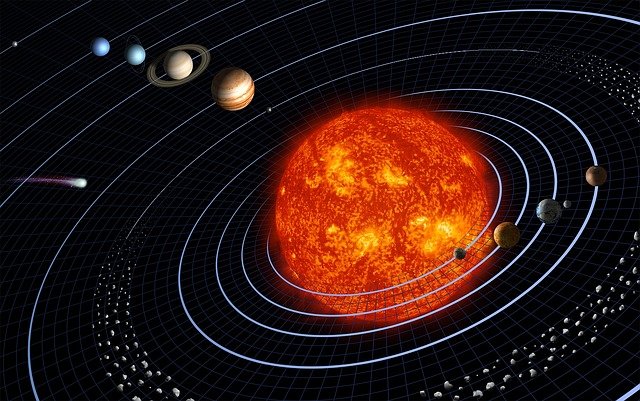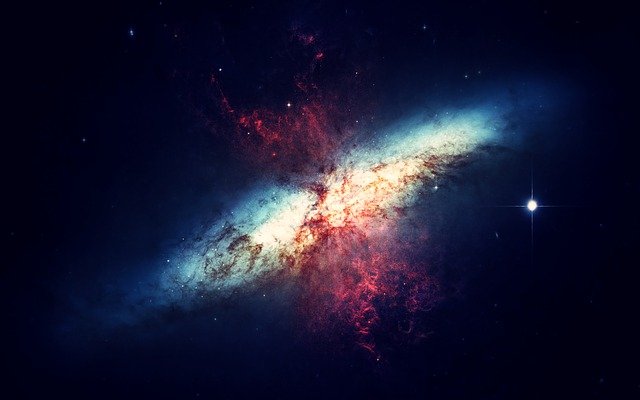What are the objects in our solar system? Information about asteroids, comets, meteorites, galaxies and universe.

Source : pixabay.com
Objects In Our Solar System
1. Asteroids: Asteroids are heavenly bodies which are similar to planets in structure, but they are smaller. Most of them are found between Mars and Jupiter. There may be over a hundred thousand of these bodies.
Where did asteroids come from? There is a theory that asteroids are the little pieces of a planet that was broken up by the gravitational force of Jupiter. This theory does not have much support. Why? Because the number of asteroids is very large. Some scientists think that asteroids may be “left overs” from the time when the solar system formed.
2. Comets: A comet is made up of ice and small rock particles. It takes a long time to orbit the sun. Why? Because its orbit is longer than an ellipse. The solid part of a comet is called the head.
When a comet gets closer to the sun, it begins to burn and forms a tail of light behind it. The tail is longest when the comet is close to the sun. Then, as the comet moves farther away from the sun, the tail starts getting smaller and finally disappears. The most famous comet is Halley’s comet which was first predicted by Edmund Halley (1656-1742) an English scientist. It appears in the sky for a few days once every 75 or 76 years.
3. Meteorites: Meteorites are small heavenly bodies moving in space. Meteors are meteorites that reach the earth’s atmosphere. When they reach the Earth’s atmosphere they are heated by air friction and begin to burn up. The burning takes place in such a short time that a streak of light flashes in the sky. This is a meteor shower (shooting star). If a meteor is large not all of it many burn up in the Earth’s atmosphere. A piece of it may land on Earth. Then it is called a meteorite. A crater in Arizona was formed by a large meteorite. This crater is 1300 meters across and 180 meters deep.
Galaxies

Source : pixabay.com
A galaxy is a group of billions of stars, often with gas and dust. Stars in a galaxy travel around the center of the galaxy like planets travel around the sun. Galaxies are not found alone. They occur in groups called clusters. A clusters can contain hundreds of galaxies.
Scientists classify galaxies according to their shapes spiral galaxy, irregular galaxy and elliptical galaxy are examples. An elliptical galaxy always appears oval- shaped.
The solar system is in the Milky Way Galaxy, a spiral galaxy. The sun is in one of the spiral arms.
Among and beyond distant galaxies, quasars appear. Quasars resemble stars. Scientists now think that quarsars are galaxies with especially bright centers. They are far away from us and their light has been travelling toward us for ten billion years.
Using telescopes, scientists have found other galaxies. One of these is the Andromeda galaxy. Some scientists call Andromeda our twin galaxy. It is about the same size and shape as the milky way. Andromeda is over 2 billion light years from our galaxy.
UNIVERSE
All of the heavenly bodies together form the Universe. But scientists are not sure about the size of the Universe. There is another question for scientists to solve. This is, where did all the stars and galaxies come from?
One hypothesis about the formation of the Universe is called the Big Bang. According to this idea, a fire ball exploded 15 to 20 billion years ago and matter and energy were given off in all direction. As the material cooled, hydrogen gas formed and collected into clouds. These clouds formed galaxies during the next half a billion years. The expansion of all matter (galaxies, stars, planets) in the universe continues. Some scientists believe that this matter may someday stop expanding and begin to shrink toward the center of the original explosion. Matter may then form a small mass that again may explode and expand.